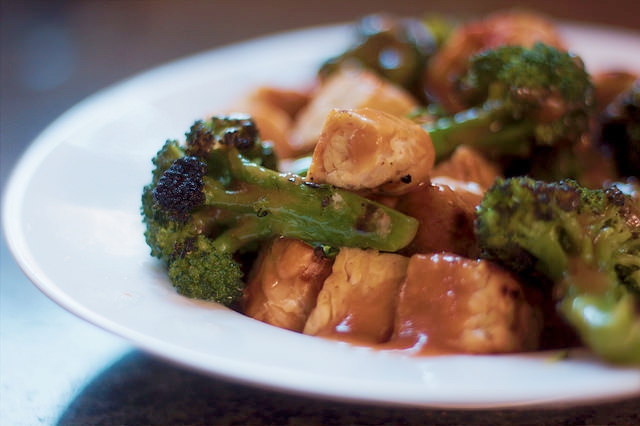What is Tempeh?
Tempeh—like tofu and seitan—is one of those foods you might be reluctant to try. It seems a bit risky, right? What’s inside that rectangular, bumpy, vacuum-sealed package?
How it’s pronounced. It’s pronounced “tem-pay” with both syllables accented equally. It’s a great source of protein: about 18 grams of protein per serving, about the same as a breakfast of two eggs and two strips of turkey bacon. It’s also high in fiber, calcium, and iron. It is free of cholesterol.
How it’s made. Tempeh originated in Indonesia and is made from soybeans. The soybeans are partially cooked then fermented with the help of a mold named Rhizopus oligosporus. This controlled fermentation process binds the soybeans together into a cake form. Some tempeh is made with added whole grains (e.g., “5-Grain Tempeh”). Tempeh’s flavor has been described as nutty, and its texture as chewy—some say it’s meaty. Like tofu, it picks up the flavors of whatever it’s cooked with, but it has a stronger base flavor than tofu.
How it’s used. Some cooks use thin slabs of tempeh for sandwiches. The tempeh is often steamed or boiled first to loosen up its texture, then either fried, sautéed, or added to a dish. Diced or grated tempeh is used in chili, stir-fries, soups, salads, and stews.
Why I like it. I really like tempeh because of its texture, which is firmer and chewier than tofu. Its taste is neutral and goes with many other flavors—the little black dress of the soybean world. For a few recipes and menu ideas with tempeh, see these tempeh posts and recipes. If you like those, explore the internet for many more.
Tempeh freezes well and is available at health food stores, Trader Joes, and in many supermarkets.
Tempeh photo by SalTheColourGeek on Flickr

